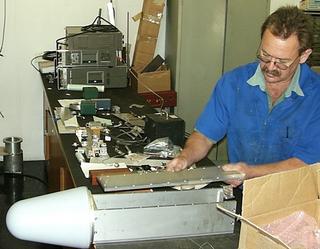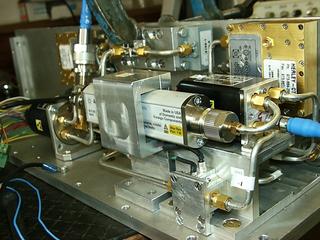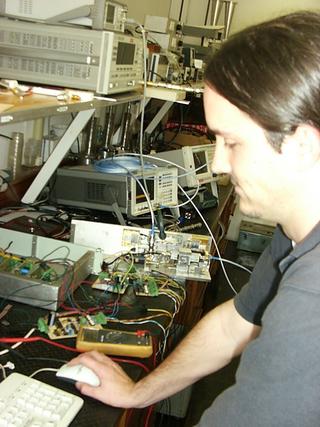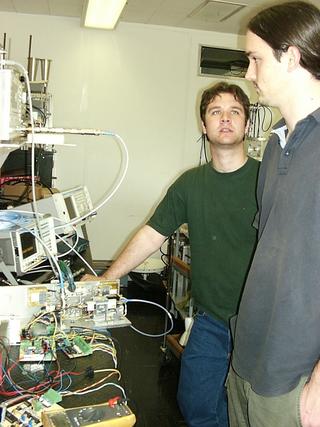


HartRAO Home > news > Radio Frequency Interference Measurements: SKA South Africa 2004/10/20
The signals received by each and all of these antennas will be combined to form a single, big, picture. This will require complex computing and information processing systems. The result will be an instrument capable of probing the secrets of the very early universe.
South Africa is one of six countries bidding to host the Square Kilometre Array (SKA) radio telescope. The initial offer to host the SKA was made on behalf of the Government of South Africa by the department of Science and Technology through the National Research Foundation and was submitted to the International Project Director in May 2003. The cover letter confirms that the initial offer and site analysis has the support of the Government though a resolution of the Cabinet.
South Africa's bid is further supported by the Independent Communications Authority (ICASA), the Premier and Provincial administration of the Northern Cape as well as business and academic communities in South Africa and the region. (For more information visit www.ska.ac.za)
The South African SKA Steering Committee is currently engaging in a number of activities in view of submitting a final proposal to site the SKA to the International SKA steering Committee by December 2005. Amongst these activities is the study of the Radio Frequency Environment at the respective SKA sites.
The protocol to use when characterising the Radio Frequency environment at a candidate site is described in SKA Memo 37: RFI Measurement Protocol for Candidate SKA Sites.
SKA South Africa has co-operated closely with the Independent Communications Authority of South Africa and initial Radio Frequency Interference (RFI) measurements were done through a joint exercise in November 2003.
In view of conducting radio-frequency measurements over a 12-month period at the central site, SKA South Africa has moved towards establishing a fully automated measuring system that would be able to measure and record Radio Frequency activity from 80 MHz to 26 GHz.
The system will utilise two broadband antennas, a network of RF switches and low noise amplifiers. Oscillators and mixers are included in order to limit the effect of cable losses for frequencies above 6 GHz whilst a noise diode is provides for calibration and system verification.
A spectrum analyser will be used to measure the received signals whilst antenna rotation, system control and data capturing is provided through a standard PC.

The RF system design created by George Nicolson, ex-Director of HartRAO and a member of the SKA South Africa team.

Andre van der Merwe assembles the RF subsection in the HartRAO mechanical workshop.

The first trial run of the mast rotator on its trailer took place outside the HartRAO mechanical workshop.

Close-up of the RF assembly under construction in the HartRAO electronics workshop.

Paul Manners of Rhodes University testing the setup through Labview, in the HartRAO microwave workshop.

Paul Manners and Japie Greef of HartRAO, who assembled the RF section, confer on the testing in the HartRAO microwave workshop.